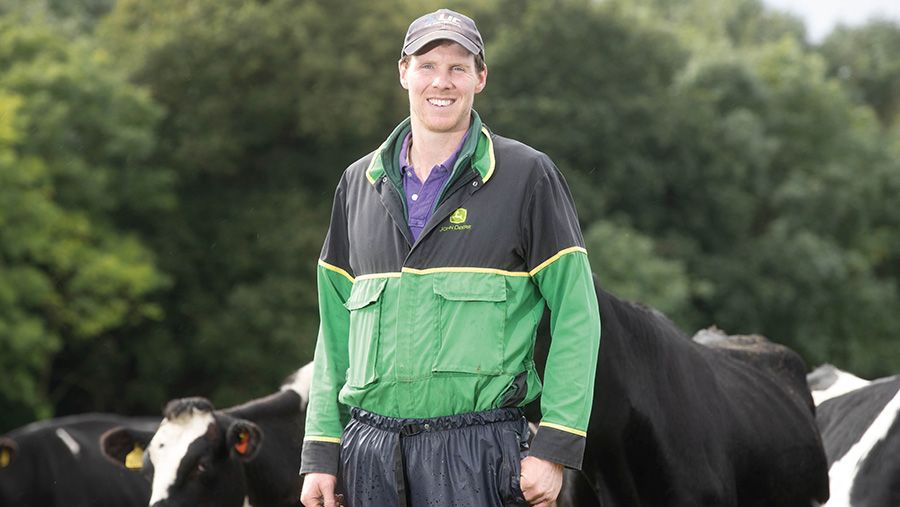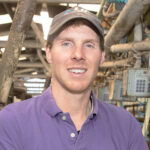Farmer Focus: Lush dry cow paddocks need ration tweak
 © Tim Scrivener
© Tim Scrivener Calving is in full swing. We have had 150 calvings so far in week two of our 12-week block-calving period. We had a 74% six-week in-calf rate.
We’ve had a few more milk fevers than expected, which is inevitable given the standing hay is considerably lusher than normal. There’s been too much calcium in the grass.
To combat this, we have started feeding hay down the feed barrier with the transition ration consisting of 2kg/head dry matter of wholecrop and 1kg/head of soya.
See also: Feeding hay as standing crop reduces milk fever on Devon farm
Unfortunately, we lost a good heifer – she contracted peritonitis, with the calf piercing the uterus pre-calving.
We’ve also had a handful of calves contract environmental E coli, which has added time through tubing fluids, but they all seem to be recovering well.
Aside from that, the calves are looking healthy, and we are set to have surplus heifer calves this year.
One mistake though: the Knocknaseed Jack Irish Friesian sire we had 60 cows in-calf to ended up being Netherhall Jack – a Hereford bull.
There’s a lesson in this for us all – to double check the prefix on the delivery note. That said, they are fantastic beef calves.
Forage-wise, things are looking very promising, with the clamps at Clares Barn brim full (very different to a year ago).
Subsequent cuts will be clamped away at the other farm. Last week, third-cut lucerne and grass silage were cut, with another 1,200t of silage banked.
Our contractor has invested in a merger, rather than using a rake.
The difference in chop quality is noticeable, with a much leafier sample (very important for lucerne, where the protein is present in the leaf), so it will be interesting to see how the clamp samples.
The merger follows the contours of the ground better and doesn’t have the soil and stone issues that tines bring.
Obviously, additional silage making has pushed cashflow a little more than budget, while income/milk sales are low at this stage in an autumn-calving system, although the valuation will be of benefit.
We have two part-time vet students and a calf rearer for the calving period. It’s a keen young team and they enjoyed calving 30 cows recently – something we all got a buzz from.

